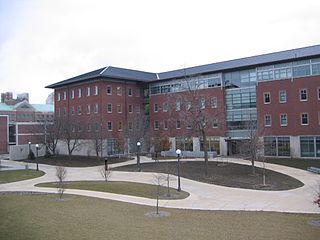
The National Center for Supercomputing Applications (NCSA) is a state-federal partnership to develop and deploy national-scale computer infrastructure that advances research, science and engineering based in the United States. NCSA operates as a unit of the University of Illinois Urbana-Champaign, and provides high-performance computing resources to researchers across the country. Support for NCSA comes from the National Science Foundation, the state of Illinois, the University of Illinois, business and industry partners, and other federal agencies.

The National Institutes of Health, commonly referred to as NIH, is the primary agency of the United States government responsible for biomedical and public health research. It was founded in the late 1880s and is now part of the United States Department of Health and Human Services. Many NIH facilities are located in Bethesda, Maryland, and other nearby suburbs of the Washington metropolitan area, with other primary facilities in the Research Triangle Park in North Carolina and smaller satellite facilities located around the United States. The NIH conducts its own scientific research through the NIH Intramural Research Program (IRP) and provides major biomedical research funding to non-NIH research facilities through its Extramural Research Program.

The National Science Foundation (NSF) is an independent agency of the United States federal government that supports fundamental research and education in all the non-medical fields of science and engineering. Its medical counterpart is the National Institutes of Health. With an annual budget of about $8.3 billion, the NSF funds approximately 25% of all federally supported basic research conducted by the United States' colleges and universities. In some fields, such as mathematics, computer science, economics, and the social sciences, the NSF is the major source of federal backing.
Technology transfer (TT), also called transfer of technology (TOT), is the process of transferring (disseminating) technology from the person or organization that owns or holds it to another person or organization, in an attempt to transform inventions and scientific outcomes into new products and services that benefit society. Technology transfer is closely related to knowledge transfer.
Science and technology in Israel is one of the country's most developed sectors. Israel spent 4.3% of its gross domestic product (GDP) on civil research and development in 2015, the highest ratio in the world. In 2019, Israel was ranked the world's fifth most innovative country by the Bloomberg Innovation Index. It ranks thirteenth in the world for scientific output as measured by the number of scientific publications per million citizens. In 2014, Israel's share of scientific articles published worldwide (0.9%) was nine times higher than its share of the global population (0.1%).

Big science is a term used by scientists and historians of science to describe a series of changes in science which occurred in industrial nations during and after World War II, as scientific progress increasingly came to rely on large-scale projects usually funded by national governments or groups of governments. Individual or small group efforts, or small science, are still relevant today as theoretical results by individual authors may have a significant impact, but very often the empirical verification requires experiments using constructions, such as the Large Hadron Collider, costing between $5 and $10 billion.
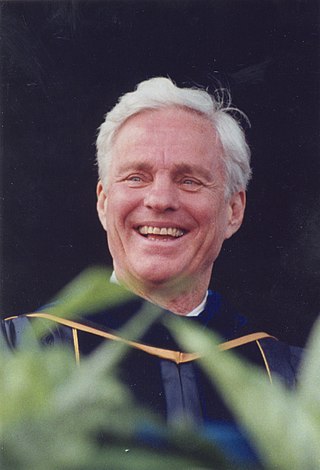
Richard Chatham Atkinson is an American professor of psychology and cognitive science and an academic administrator. He is president emeritus of the University of California system, former chancellor of the University of California, San Diego, and former director of the National Science Foundation.
Research funding is a term generally covering any funding for scientific research, in the areas of natural science, technology, and social science. Different methods can be used to disburse funding, but the term often connotes funding obtained through a competitive process, in which potential research projects are evaluated and only the most promising receive funding. It is often measured via Gross domestic expenditure on R&D (GERD).
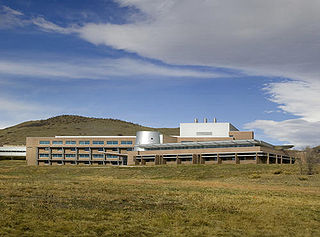
The National Renewable Energy Laboratory (NREL) in the US specializes in the research and development of renewable energy, energy efficiency, energy systems integration, and sustainable transportation. NREL is a federally funded research and development center sponsored by the Department of Energy and operated by the Alliance for Sustainable Energy, a joint venture between MRIGlobal and Battelle. Located in Golden, Colorado, NREL is home to the National Center for Photovoltaics, the National Bioenergy Center, and the National Wind Technology Center.
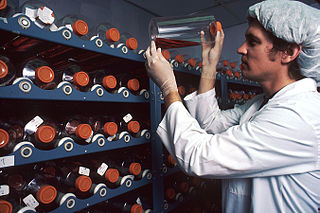
Medical research, also known as experimental medicine, encompasses a wide array of research, extending from "basic research", – involving fundamental scientific principles that may apply to a preclinical understanding – to clinical research, which involves studies of people who may be subjects in clinical trials. Within this spectrum is applied research, or translational research, conducted to expand knowledge in the field of medicine.
Through history, the systems of economic support for scientists and their work have been important determinants of the character and pace of scientific research. The ancient foundations of the sciences were driven by practical and religious concerns and or the pursuit of philosophy more generally. From the Middle Ages until the Age of Enlightenment, scholars sought various forms of noble and religious patronage or funded their own work through medical practice. In the 18th and 19th centuries, many disciplines began to professionalize, and both government-sponsored "prizes" and the first research professorships at universities drove scientific investigation. In the 20th century, a variety of sources, including government organizations, military funding, patent profits, corporate sponsorship, and private philanthropies, have shaped scientific research.
The Science and Technology Facilities Council (STFC) is a United Kingdom government agency that carries out research in science and engineering, and funds UK research in areas including particle physics, nuclear physics, space science and astronomy.
Slow science is part of the broader slow movement. It is based on the belief that science should be a slow, steady, methodical process, and that scientists should not be expected to provide "quick fixes" to society's problems. Slow science supports curiosity-driven scientific research and opposes performance targets. Slow science is a continually developing school of thought in the scientific community. Followers of slow science practices are generally opposed to the current model of research which is seen as constrained by the need for continued funding. The slow science perspective attributes the overinflation of scientific publishing, and rise in fraudulent publishing with the requirement for researchers and institutions to create a justification for continued funding. The term slow science was first popularised in “Another Science is Possible: A Manifesto for Slow Science” by researcher Isabelle Stengers in 2018. The idea of “publish or perish”, which too links limitations in the quality of research to financial constraints, has been around since the early 20th century. The slow science philosophy has been described as both a way to approach scientific research, and a science led movement which acts as a critique of science's function in neoliberal society.
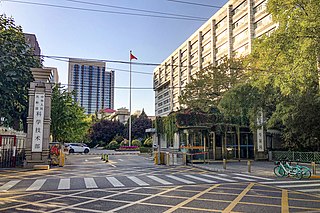
The Ministry of Science and Technology is the fifth-ranked executive department of the State Council of the People's Republic of China, which coordinates science and technology activities in the country. The office is located in Xicheng District, Beijing.
The Swiss Federal Laboratories for Materials Science and Technology is a Swiss research institution for application-oriented materials science and technology. It has three locations – Dübendorf, St. Gallen and Thun. As part of the ETH Domain, it is assigned to the Federal Department of Economic Affairs, Education and Research (EAER). For more than 100 years since its foundation in 1880, Empa has been a material testing institute. Since the late 1980s, it has increasingly transformed into an interdisciplinary research institute for materials and technologies.

Science and technology in Morocco has significantly developed in recent years. The Moroccan government has been implementing reforms to encourage scientific research in the Kingdom. While research has yet to acquire the status of a national priority in Morocco, the country does have major assets that could transform its R&D sector into a key vehicle for development. The industry remains dominated by the public sector, with the universities employing 58% of researchers. Morocco's own evaluation of its national research system – carried out in 2003 – revealed that the country has a good supply of well trained high quality human resources and that some laboratories are of very high quality. However, the greatest gap at that point of time lied in the link between research and innovation. The educational qualifications of Moroccan researchers have increased significantly since the early 1990s. The University of Al-Karaouine is considered the oldest continuously operating academic degree-granting university in the world.
Science and technology in Kazakhstan – government policies to develop science, technology and innovation in Kazakhstan.
Science and technology in Uzbekistan examines government efforts to develop a national innovation system and the impact of these policies.
University technology transfer offices (TTOs), or technology licensing offices (TLOs), are responsible for technology transfer and other aspects of the commercialization of research that takes place in a university. TTOs engage in a variety of commercial activities that are meant to facilitate the process of bringing research developments to market, often acting as a channel between academia and industry. Most major research universities have established TTOs in the past decades in an effort to increase the impact of university research and provide opportunities for financial gain. While TTOs are commonplace, many studies have questioned their financial benefit to the university.
The common definition of academic entrepreneur is similar to the original definition of ‘entrepreneur.’ It states “the AE is a university scientist, most often a professor, sometimes a PhD student or a post-doc researcher, who sets up a business company in order to commercialize the results of his/her research” Academic entrepreneurship today can be understood as either:








